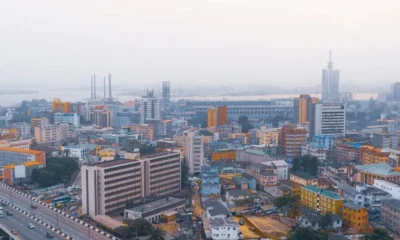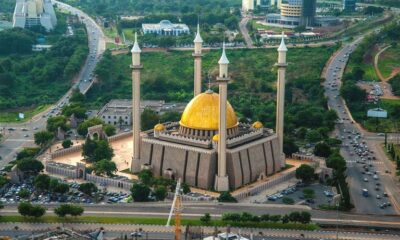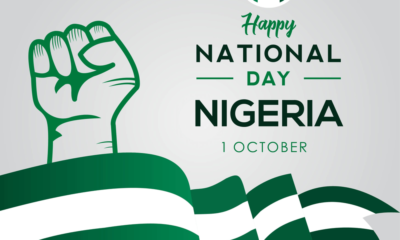Experts have condemned the Federal Government’s move to source another $1.12 billion (N342.72 billion) to repair the nation’s refineries.Their opposition to the plan is premised on the speculation that the government may have spent up to N963 billion in the last 18 years for the repairs of the refineries without achieving the desired result.
Stakeholders who spoke with The Guardian advised the Federal Government to hand over the management of the refineries to private investors through a transparent privatisation programme.
The Nigerian National Petroleum Corporation (NNPC) has four refineries, two in Port Harcourt Refinery Company Limited (PHRC) and one each in Kaduna Refinery and Petrochemical Company Limited (KRPC) and Warri Refinery and Petrochemical Company Limited (WRPC). The facilities have a combined installed capacity of 445,000 bpd.The Minister of State for Petroleum Resources, Ibe Kachikwu, had said the refineries would require $1.12 billion (N342.72 billion) for a comprehensive turnaround.
Huge funds have been expended on seasonal Turn-Around Maintenance (TAM) without much result due ostensibly to the obsolete state of the facilities. Former NNPC Group Managing Director, Funsho Kupolokun, reportedly testified before the House of Representatives in 2007 that $1billion (N306 billion) was spent between 1999 and 2007 to repair the refineries.In 2013, former Minister of Petroleum, Diezani Alison-Madueke, said $1.6 billion (N489 billion) was budgeted for the TAM of the refineries, adding that over 75 per cent of the spare parts maintenance in the Port Harcourt Refinery had arrived in the country. She added that original builders of the refinery had been paid $35 million for the TAM.
Alison-Madueke put the total amount to be expended on the Port Harcourt refinery at $147 million while the modernisation of the facility would cost the government $406 million.In 2015, the Group Executive Director, Refining and Petrochemicals of the NNPC, Ian Udoh, said the corporation opted to use local engineers at the cost of $550 million (N168 billion), spread across 18 months.
No provision was made under the 2017 budget for the reconstruction of the four refineries.Despite spending these huge resources, data from NNPC show that the combined average refining capacity utilisation of the refineries in 2013 remained at a low level of 22 per cent as against 21 per cent in 2012.
In 2014, the combined average refining capacity utilisation fell to14.4 per cent from 22 per cent in the previous year. In 2015, the combined refining capacity utilisation dropped further to 4.9 per cent against 14.4 per cent in the previous year.For the month of June 2017, the three refineries produced 222,585 metric tonnes (mt) of finished petroleum products out of 231,836MT of crude processed at a combined capacity utilisation of 12.73 per cent compared to 23.09 per cent combined capacity utilisation achieved in May.
Despite the low performance of the refineries, NNPC has already inaugurated a committee with the mandate to bring them to about 90 per cent capacity with a budget of $1.12 billion.Kachikwu had told journalists at the beginning of this administration that even if the current refineries were working on a 100 per cent basis, they would only be able to account for 20 million litres of petrol a day, which is about 50 per cent of the country’s consumption.
On the need to privatise the refineries, Pioneer Director, Centre for Gas, Refining and Petrochemicals, Institute of Petroleum Studies, University of Port Harcourt, Godwin Igwe, in an interview with The Guardian, described the decision as highly preposterous as past results of TAM suggest a careless use of such a huge capital investment.
Igwe, therefore, called for the privatisation of the refineries to protect the country from the wastage of funds.He stated: “One of the most difficult problems facing developing countries is their inability to service and maintain the few equipment bought from developed countries with their scarce foreign exchange reserves.
“Anytime there is a major breakdown, experts from technologically developed countries are flown across the oceans at great expense to the host country. Care is another word for preventive maintenance, and good care is essential to extend the useful life of anything at all, including equipment.
“Nigeria has a name plate refining capacity of 445,000 bpd and produced only 95,300 bpd of products in 2012, and has for years been heavily dependent on imports from outside, specifically Europe.“As far as can be ascertained, nothing has significantly changed since the report of the National Refineries Special Task Force of August 1, 2012 chaired by Dr. Kalu Idika Kalu.”
According to Igwe, the report concluded that “the most pivotal of the root causes is that the current ownership structure and business model have failed to adequately provide for the safe and efficient performance of the refineries. They further concluded that the three Nigerian refineries have not been efficiently and safely operated and maintained for more than 15 years. During the same period, they have not been able to refine the designed quantities of petroleum products. They have not operated as performance-oriented businesses and are plagued with severe plant maintenance and integrity issues, as well as irregular crude supply and products evacuation. Furthermore, they are beleaguered by poor governance in a non-commercial operating structure, which is considered unsustainable. So, the best decision is for the government to privatise the refineries.”
Also, Associate Director, PricewaterhouseCoopers (PwC) Nigeria, Olumide Adeosun, said the Federal Government ought to have sold the refineries long ago to private investors.“Very few countries run refineries because government does not run business. These refineries are running at low capacity utilisation and therefore should be sold to investors. If government still feels like having ownership of the assets, it should concession them. Government does not have any business or national justification for holding on to them,” he added.
Adeosun stated further that “Refineries all over the world normally have TAM cycle. It usually happens every year and this costs a lot of money. I don’t think we have actually done any serious TAM in the last few years.
“I even doubt if the budgeted amount will be enough to carry out a thorough TAM on the refineries. There is a big refinery that went down and cost between $2 billion to $4 billion to carry out TAM.”
Justifying the need to carry out more TAM on the refineries, NNPC’s Group Managing Director, Dr. Maikanti Baru, said: “We want to show everyone that we can fully run the refineries. You must all work together to operate them at 100 per cent capacity as this is the only way to ensure profitability.”
The Chief Operating Officer, Refineries and Petrochemicals, Anibor Kragha, disclosed that over 28 expressions of interest had been received so far for the financing of the rehabilitation project and that the goal was to get more by the end of the year. Assuring that the nation would not suffer financially from the project, Kragha explained that the approved financial model would guarantee payment to partners only from incremental profits.
Explaining how the TAM would be financed, the Group General Manager, Corporate Planning & Strategy, NNPC, Umar Ajiya said: “What we have proposed and secured presidential mandate to do is to get funds from technical partners to retrofit the refineries.
“The technical partners are just financiers, not equity holders. While the refineries are being repaired in the next two or three years, the same technical partners will be bringing in products equivalent to the capacity of the refineries; it’s more or less like your refineries are still running. They are giving you money. They are bringing in products and at the end of the deal when the refineries begin to work, you can begin to pay back their loan.”
– GuardianNgr

































































